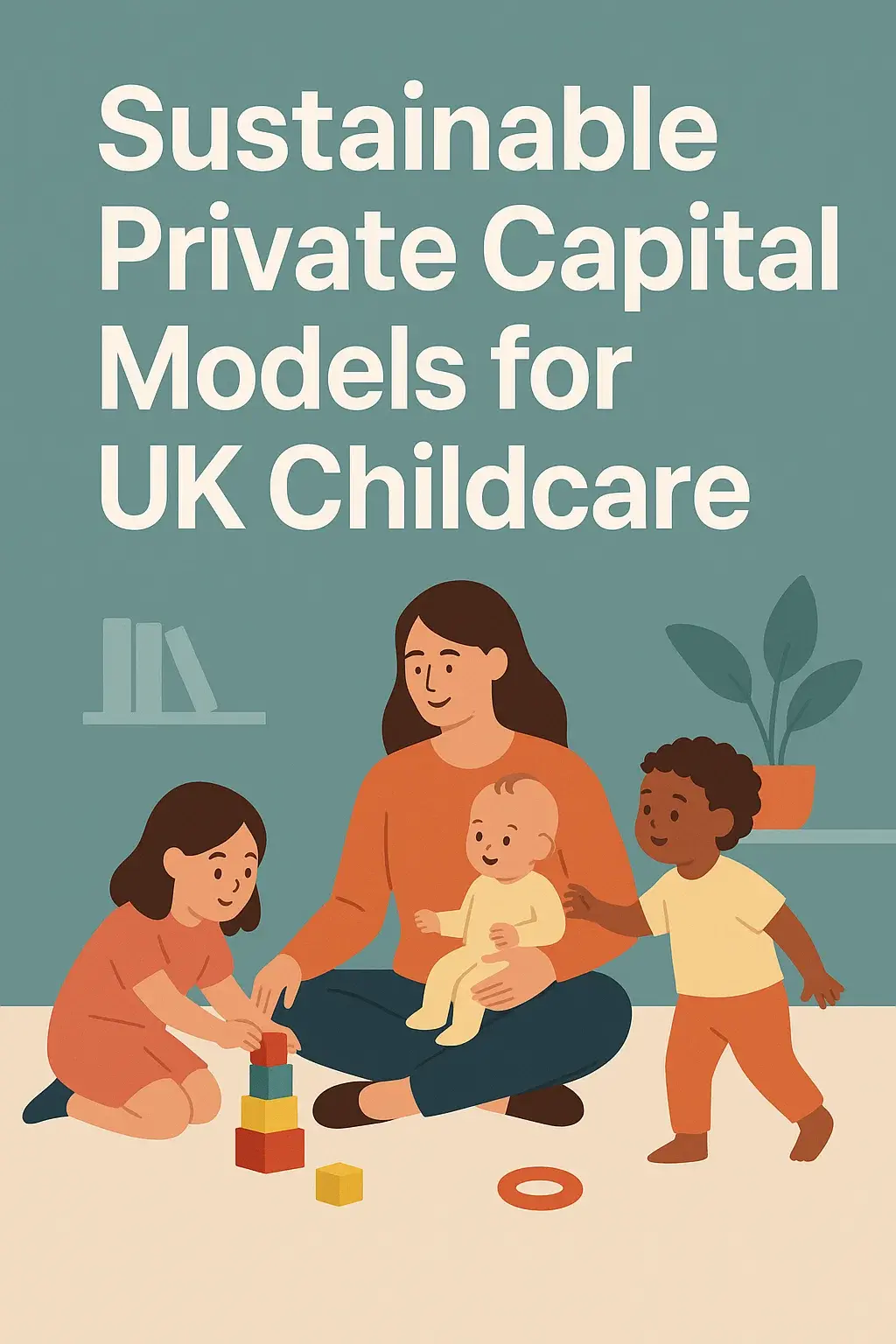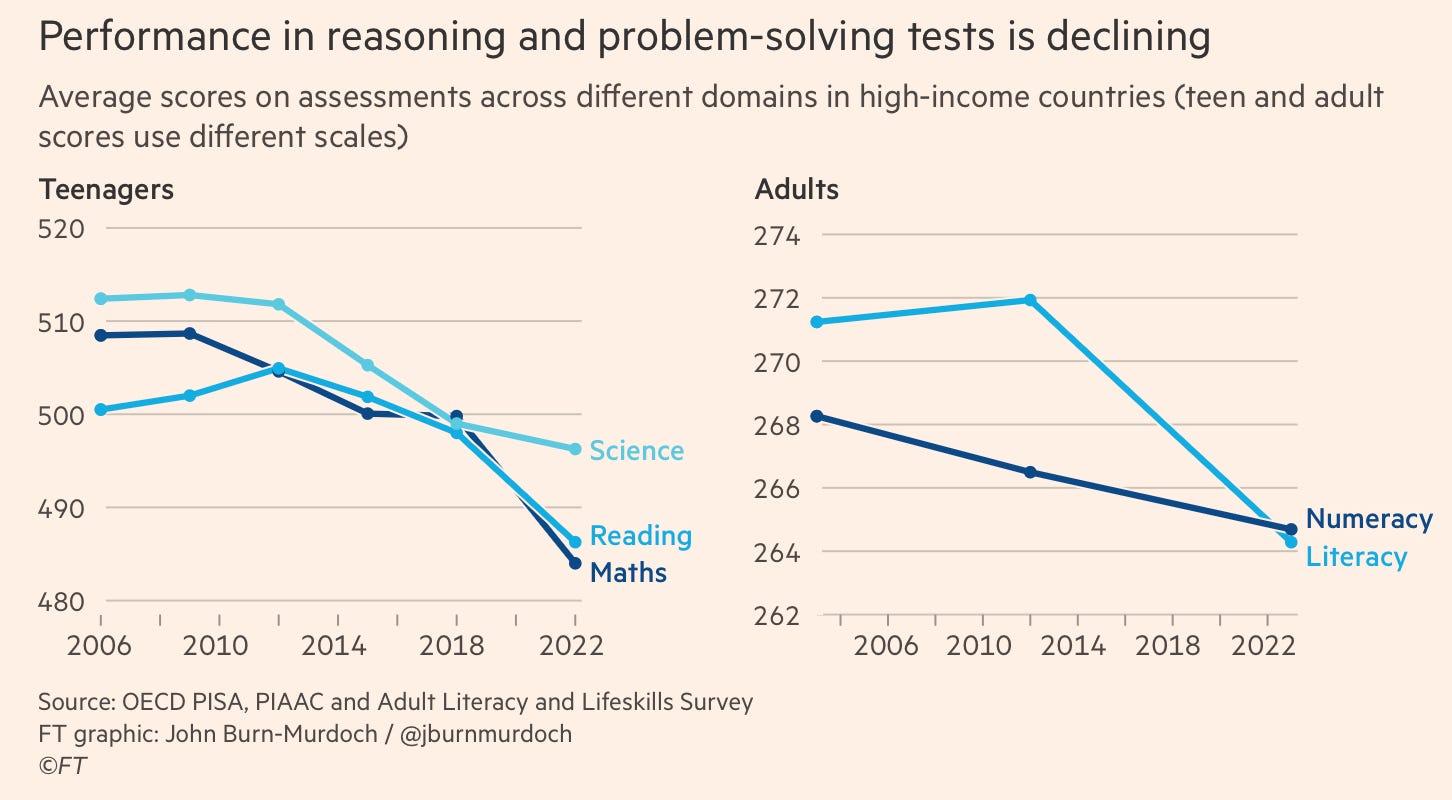Building Value, Not Just Valuations: A More Sustainable Model for Private Capital in Childcare
“The test of any society is how it cares for its youngest and its oldest.”, Pearl S. Buck
A Sector in Crisis
The UK childcare sector is facing an unprecedented crisis. Statistics paint a stark picture: 84% of providers struggled to recruit or retain staff in 2024 (EY Alliance). Low pay, poor morale, and heavy compliance demands have driven nearly a third of workers to seek jobs in other industries (Ofsted). Many can earn more for less stressful work elsewhere, work that doesn’t carry the same legal responsibilities or emotional toll.
At the same time, registered childcarers have dropped 8% in 2022 (Reuters) and another 2% in 2024 (gov.uk). These losses hit just as government policies expand demand, such as the 30 hours free childcare funding (Pacey) that will push 71% of parents to increase working hours (Phoenix Group). Meanwhile, the UK grapples with a declining birth rate of 1.4, far below the replacement rate of 2.1, a demographic cliff familiar across OECD countries (see Amol Rajan’s BBC Sounds podcast with Paul Morland).
Yet if there are no teachers to provide care and fewer nurseries left to offer it, what happens next?
Chronic Underfunding
Underfunding by the state is a root cause. Funded hours rarely cover actual delivery costs, forcing nurseries to operate at a loss. At one Hatching Dragons school in Twickenham, this mismatch led to closure within 18 months of the 30-hour expansion, parents expected free childcare, but every place cost more than was sustainable.
Parliamentary Committee reports underscore the gap:
- Wage rates rose ~35–46% (2017–2023) while public funding increased only ~13%.
- Energy bills surged 600%; nursery food costs climbed 10%.
- Business rates going up by 40% in 2023’s re-evaluation.
- Nurseries are “zero-rated” for VAT, meaning they cannot charge VAT nor reclaim it on supplies, pushing more cost onto parents (Guardian summary here).
Fee Inflation and Household Strain
The inevitable result is fee inflation. According to Coram, nursery costs rose 7% year-on-year, with UK families now spending about 30% of net household income on childcare, more than mortgages or pensions in many cases.
Consider a London family:
- £4,000/month for childcare (two children)
- £4,000/month mortgage (interest-only)
- £1,500/month for living costs
This leaves little room for savings or quality of life. Central London fees can hit £500 per week (City Hall). Unsurprisingly, 3 in 10 working parents have reduced hours due to costs (Phoenix Group), while 1 in 10 women have left the labour market entirely (Fawcett Society).
Read more: 15 or 30 Hours Free Childcare: What You’re Entitled To | Hatching Dragons
Fragmentation and Consolidation
Historically, childcare was local and community-driven. In 2015, 87% of nurseries were single-site, owner-managed “mom n pop” operations. By 2025, that share has dropped to 57%, as larger chains consolidate the market (UCL report: Acquisitions, Mergers and Debt).
This shift is fueled by private equity and growth capital. Take Kids Planet, which grew from 2,800 to 11,500 places between 2018–2022 via £41 million in growth funding (BGF, Freman Capital). Or Families First (formerly Little Garden), which scaled to 85 nurseries in four years through August Equity’s debt-fueled expansion.
While 98% of operators remain rated “Good” or “Outstanding” (Ofsted 2025), school readiness rates at primary entry are just 67%, a troubling disconnect.
The Promise, and Reality, of Scale
Economies of scale should, in theory, lower costs. Centralised back-office functions, streamlined administration, and AI automation could free educators to focus on children. Yet despite consolidation, fees continue to climb.
Key facts:
- UK parents pay ~£14,800/year for full-time nursery (OECD 2023; Reuters).
- Fees are up 7% YoY (Coram).
- Childcare consumes 30% of household net income (Reuters).
Private equity accounts for roughly 8% of the market, but its impact is outsized. Groups claim professionalised service warrants higher fees, yet efficiencies aren’t passed on to families or staff.
Debt-Driven Models and Risks
UCL’s REport “The Financialisation of Childcare warns of fragile, debt-fuelled models echoing the pre-collapse elder care sector. Expansion is often sustained by leverage rather than organic growth, pushing chains to prioritise high-income areas and cost-cutting.
The Trades Union Congress (TUC) and Early Education & Childcare Coalition (EECC) highlight concerning patterns:
- Staff-to-child ratios stretched to legal limits
- High turnover and low wages to maintain investor returns
This is not to vilify all investors, many aim for ethical growth, but structural incentives remain short-term and profit-centric. With the government’s expanded 30-hour funding injecting more public cash, risks of “value extraction” loom large.
Towards Better Models
“The true measure of any society can be found in how it treats its most vulnerable members.”, Mahatma Gandhi
The solution to childcare’s crisis won’t come from a single fix, neither state funding alone nor burdening parents further is sustainable. We must explore hybrid models that blend private capital, public policy, and community-driven initiatives, prioritising long-term value over short-term gains.
Learning from Global Examples
France offers an instructive model through the Crédit d’Impôt Famille (CIF) tax incentive. Businesses that subsidise childcare can deduct 50% of expenses against corporate taxes, fostering a tripartite funding structure: 50% from employers, 25% from the state, 25% from parents. This has boosted maternal employment and embedded childcare within workplace benefits.
The UK’s Workplace Nursery Scheme is less generous, employers can deduct investments as a business expense but receive no tax credits. Yet with the right incentives, employer-led childcare could bridge affordability gaps while easing return-to-office challenges post-COVID.
Our Work with London Business School
To explore this further, Hatching Dragons partnered with the London Business School to challenge MBA students: How can the UK create employer-backed childcare models within existing legislation?
Findings were compelling:
- Employers can treat childcare funding as a deductible investment, while staff use salary-sacrifice schemes to reduce taxable income and NICs.
- Landlords benefit from repurposed commercial space into childcare hubs, revitalising underused assets and attracting corporate tenants.
- Parents gain access to subsidised, high-quality care near work, enabling full-time employment and reducing financial strain.
This corporate amenity model is now being piloted within Hatching Dragons, positioned as a benefit for tenants in mixed-use developments and structured via service charges, debentures, or employer partnerships.
Cooperative Platforms for Independents
Not all solutions require large chains. Drawing inspiration from private equity merger strategies, cooperative platforms can unite independent nurseries under shared services, centralising admin, procurement, and compliance while preserving individual pedagogy and community ethos.
This “shared backbone” model could unlock scale efficiencies (HR, payroll, IT) without compromising identity or purpose. Profits remain within the cooperative, reinvested into staff development, bursary places, and quality improvements rather than external dividends.
Principles of a Fairer Model
Several principles could underpin a more sustainable childcare ecosystem:
- Fair wage ratios: Guaranteeing staff salaries comprise at least 50% of income, aligning pay growth with revenue growth.
- Tax reforms: Scrapping business rates or addressing VAT anomalies in exchange for commitments to staff training and fee reductions.
- Employer partnerships: Leveraging corporate funding and tax benefits to lower parent costs while enhancing recruitment and retention for businesses.
- Alternative revenue streams: Incorporating workplace childcare into mixed-use developments, supported by landlords seeking new value propositions.
Such frameworks can deliver 10–15% investor returns, not excessive, but stable and aligned with community benefit. By prioritising patient capital over speculative growth, we can build models that reward families, educators, and investors alike.
Stakeholder Capitalism in Practice
This is not about rejecting private capital but reshaping its role. A stakeholder capitalism approach reframes childcare as infrastructure rather than a commodity. Educators are value creators; families are partners, not customers. Investment decisions are measured not just by IRR but by social return on investment, loyalty, workforce participation, and child development outcomes.
A New Social Contract
“Demography is destiny.”, Auguste Comte
Childcare must be reframed as social infrastructure, on par with transport or broadband. The UK has chronically underinvested in this foundation, despite clear links between early education, workforce participation, and long-term economic growth.
Economist Diane Coyle highlights this oversight in The Enlightened Economist, while commentators like Edie Lush (The Female Quotient) and Sam Freedman (Comment is Freed) underscore the gender and fiscal impacts of neglecting early years. Billions are spent mitigating problems later in life, yet robust early support could prevent many altogether.
Opportunity for Transformation
Childcare is now among the fastest-growing service sectors globally. The UK has an opportunity to lead, not just in financial engineering but in designing equitable, intelligent childcare ecosystems that work for families and the economy alike.
Key actions for stakeholders:
Private equity and investors
- Shift focus from pure scale to quality and affordability.
- Integrate systems to cut duplication rather than corners on care.
- Prioritise patient capital with moderate returns but high social impact.
Policymakers
- Regulate for equity and transparency, not just access.
- Explore return caps where public funding is involved.
- Incentivise co-ops and community interest companies that reinvest surpluses into care quality and staff pay.
Providers
- Consider collaborative models: shared tech, shared costs, and shared values to remain viable without compromising identity.
- Use collective bargaining power for procurement, training, and innovation.
The Question Ahead
The debate is not whether private capital belongs in childcare, it does. The question is: What do we ask of it?
If we prioritise only growth and valuations, we risk replicating the fragility seen in elder care. But if we demand sustainability, equity, and measurable impact, we can create a sector that serves everyone: investors, educators, employers, and most importantly, children and families.
A Mission Within Reach
The childcare crisis is daunting but solvable. By aligning incentives across state, employer, and community, and adopting cooperative as well as corporate solutions, we can reimagine care not as a burden but as an engine of societal and economic renewal.
This is the challenge, and the opportunity, for the next generation of UK childcare.




